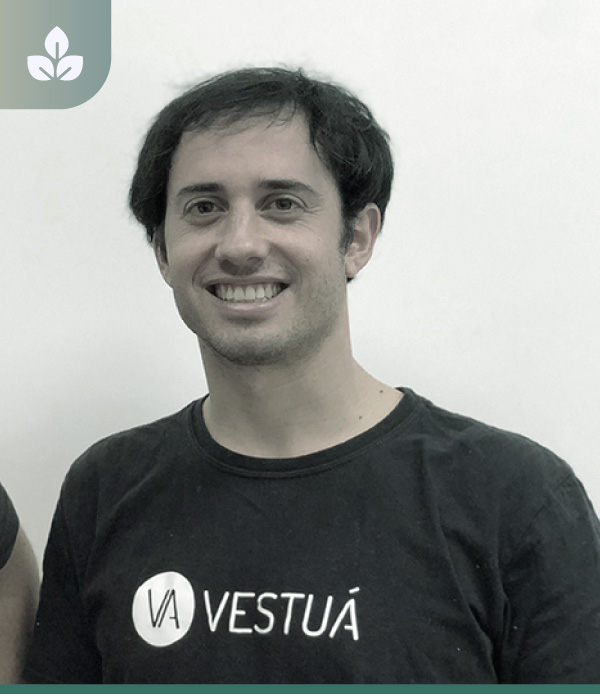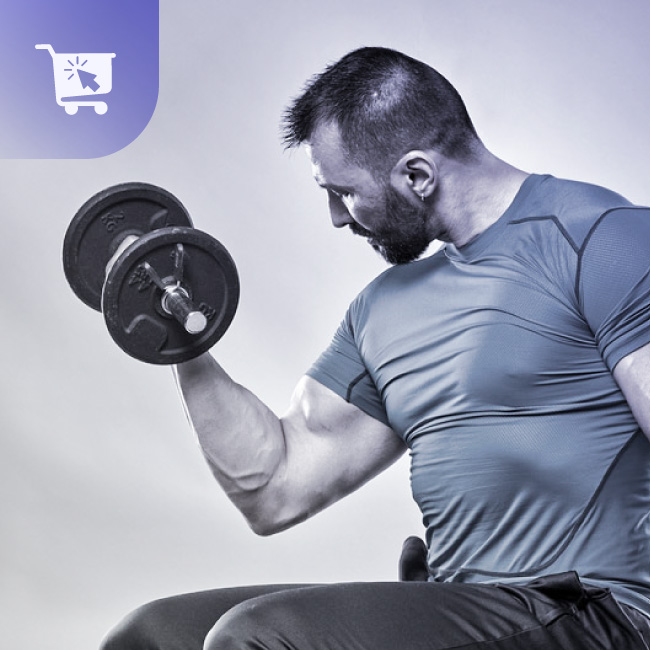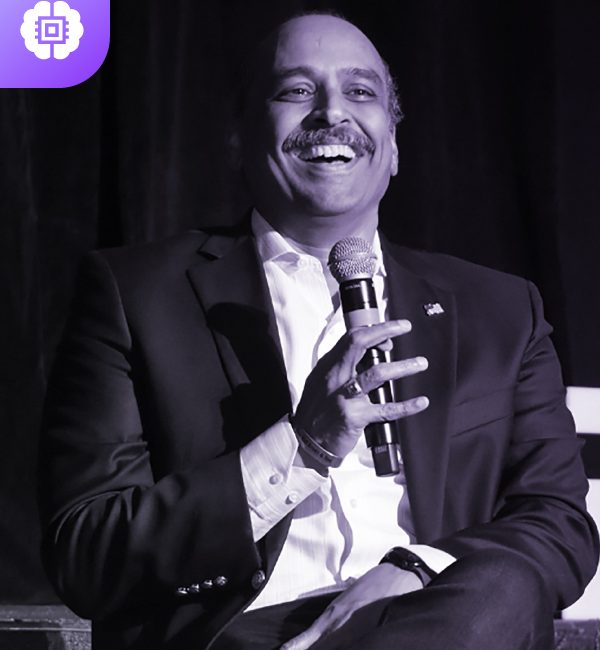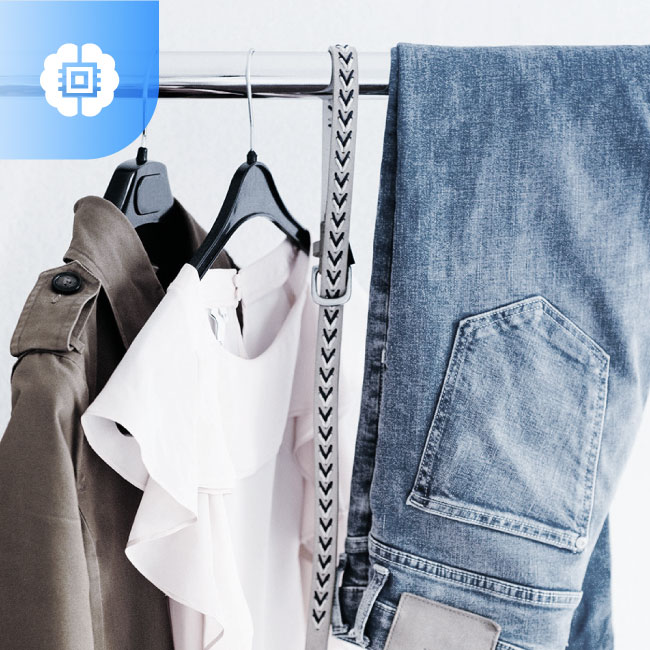
Inside Vestua’s Strategy To Scale Up Their Resale Business
About this Podcast:
The resale market is thriving at the moment. With today’s shoppers drifting towards more deliberate, accessible shopping patterns, the total second-hand apparel market is expected to double in the next five years to $51 billion. Meet Santiago Valdés and Joaquín Zavala, the co-founders of Vestuá. Founded in 2014, Vestuá is an e-commerce platform for resale lovers. The multi-fashion brand reseller is changing the way we give pre-loved items a second-hand life through their robust logistics and commitment to reducing the environmental impact of the fashion industry.
Episode Transcript:
Akshara Subramanian
Hi, everyone, welcome to another episode of The Vue Podcast. Shoppers are now moving towards more deliberate, accessible shopping patterns. And that being said, the total second hand apparel market is expected to double in the next five years to $51 billion. We have two guests today who are transforming the way pre-loved items are bought and sold - Vestuá, an e-commerce platform for the resale lovers. We have today with us Santiago VALDÉS and Joaquin Zavala, the co-founders of Vestuá, two minds who saw the sale of used products as a small opportunity to start this venture together by giving a second life to things. Welcome, Santiago and Joaquin. It's so great to have you here today.
Santiago Valdés & Joaquin Zavala
Welcome. Thank you.
Akshara Subramanian
So why don't you tell us a little bit about your journey with Vestuá, right? We hear that both of your friends from school who decided to pursue their passion. So tell us, where did it all begin and what made you decide to step into that re-commerce industry? Either of you can go first.
Joaquin Zavala
Yeah, well, we are friends from and we, some years ago, 5 or 7 years ago, we used to sell our things such as our tennis racket, our trousers and so many other things. But we wondered why everyone didn't do the same. And we started over discovering that there are some things that make people don't sell their own used things, such as, for example, all the time. It's such a time consuming process, selling used things. And the other part is the risk of selling something. So we started intermediating this process. We started withdrawing some other vertical products, such as children, sports and technology products and we ended up on this model focused on fashion. And we help our customers to give a second life to their clothes. And that means that we do all the process. We go to our customers' homes of the customer, we withdraw all their or her items. We take them to our warehouse. We make some kind of checking process so as to determine the selling situation of the item. And if that is the case, we take a professional photograph, we publish on our website, and finally, we store it so as to be, so as to sell. And at that time, when it is sold, we pay the seller, the percent that we have agreed. We are convinced that there is a lot of value in second hand items, especially in fashion. So our idea is to reduce these transaction costs that I told you before in terms of the risk and the time, and this is a great solution for us.
Akshara Subramanian
Right, but that's actually very interesting because you, you're talking a lot about, you know, the risks, which is that when you're selling on a regular marketplace, there's middlemen involved. There's a lot of uploading, there's a lot of missing data. But over here, you are directly able to sell to your customers. So can you also talk to me also a little bit about what are the risks that you are helping minimize through a platform like Vestuá?
Joaquin Zavala
Yeah, well, the most extreme situation that we discovered was somebody who went to sell his or her motorcycle and finally he was dead. He was shocked. Yeah, that's extreme, of course, but yeah, medium risks are more likely to be like a robbery or to be like a forgery or something like that. So when a company like us makes the process for you, you are not exposed to that, to those risks. And we think that's a real value for our customer. And that's like a really, really important value for them.
Akshara Subramanian
Correct. OK. All right. So there's been you know, I think we've been seeing this even more with the pandemic, but during this time, because people don't want to sometimes spend a lot of money on new products, a lot of people are looking back into resale, right? They're looking into used items or rental pieces or thrifted pieces. So when an industry like this is growing right now, you have all these millennials and Gen-Z consumers who are powering the growth of this second hand shopping. And I believe even 90% of Gen-Z shoppers are open to second hand right now. So tell us, how do you think that the consumer mindset is evolving? What is it like over there in Chile? How are people reacting to something like a second hand model? You know, are they trusting it? Are they willing to invest money into buying thrifted items?
Santiago Valdés
Yeah, sure. Well, the first thing is why is this possible right now? Because technology has enabled way more transactions by making them cheaper and scalable. So the consumer, the new generations have grown with this technology. We have seen the various marketplaces, we can even sell now on Facebook and buy things. So new generations, particularly Gen-Z has told us, has been raised with this. So it has always been an alternative because technology has enabled us to search for better products. I mean, in the past, you were only able to go to the thrift shop that was on the corner of your street. But now you can potentially access the whole world in products. So you're able to connect to way more products than before. So I think that's one of the reasons that this generation has this behaviour. And the second reason, of course, we have, and I'm not Gen-Z, they have grown with this environmental mentality. So they are way more conscious about environmental issues. And this, I think, these two reasons are the reasons why they are way more conscious and they know that they are able to get way more value with second-hand. So they purchase something by, I don't know, a third of the price. They are able to find way, way more, you know, different products, different items, vintage, way more styles with more sizes when it's hard to find in regular stores. So I think in our case, we've seen new generations, but we've also seen older generations pick up this trend. They are also understanding the value they can get by shopping second hand, especially as I told the price. It's really relevant, of course, but also it's the depth of products that you can access and you can find. You can also dress like in a very particular way because you know that no one else's going to have that same piece. So that's very special for our consumers.
Akshara Subramanian
Right. I think it's interesting. You said about 3 or 4 things that really stood out to me. One was, of course, the digitisation and everybody going online has really you know, added that versatility. So if you went to a regular thrift store, maybe you'd have only very limited items in the physical space. But now, because everything is online, you have way more products. And then the second thing you said is about just sustainability and being environmentally conscious. So people now Gen-Z is not just about brands they want to do you know, they want to talk about how to use better fabrics, how to spend less money, how to reduce consumption, how to be more circular and green. So that is that sustainability angle. And then, of course, you said pricing, which is affordability. People, especially with the pandemic now, people are not going to be spending a lot of money on shopping. They're going to probably reduce their costs and everything. So these are very, very important things. But before that, I wanted to talk about something, right? So going back to digitization, I think in the last couple of years, especially in Latin America, there's been a deeper online penetration and mobile penetration, right? I think that a lot more companies have gone online. So tell us about what's going on in LatAm. Are a lot more companies open to having digital businesses? Are they selling online more? What is the situation you're seeing over there?
Joaquin Zavala
Well, actually, some days ago that the president of Chile has announced that he's opening the process to to develop the 5G technology. So in Latin America, we are not starting but leaving this digitalization process. And that means that many companies like us are starting to especially in this COVID situation and context, they have started to considering this channel of selling and showing their own brands through this new way. I mean, the technology and in terms of the websites and the e-commerce, et cetera. So I think there is a gap between our situation and the potential that we can reach. As you said, there's an important penetration of technology in terms, for example, Facebook users or smartphone users are above 70% in this country. That is like, it's tremendous. But on the other hand, you have that the e-commerce penetration is not that much if we consider like the same market. So I think that little by little, many companies, like us, consider this channel as a way to grow especially and I repeated the idea of covid situation. And probably we will remain and keep on this situation for a couple of months and also a year or so. It's time for us to consider it. And, of course, to start selling by and start showing our brands through that channel.
Akshara Subramanian
That's really interesting. You said that there was a contrast, right? So you have more than 70% of users on Facebook, but the economic penetration is 30. So what do you, what do you think is the reason why. I think, people are still not embracing e-commerce. Why are they what do you think are the reasons people still don't want to completely shop online? Is there like a lack of trust or do they feel it's still not convenient or they still want the experience of the physical store? What are the reasons?
Joaquin Zavala
Well, there are some there are many reasons, but you have the logistics, for example, that logistics some time ago, some years ago, some months ago was terrible because we are such a long country, it's quite difficult to get to the farthest on the north or on the south. So little by little, it has improved a lot. Also, there's like the confidence about these channels of e-commerce, of paying where you don't know who is behind the screen, has risen a little also not only because the customer would like to be more confident, but also because they need to be. And there's then there's no another way to buy what you need. So, like, it's something that you need to do. And of course, you start trying and then you do you say, OK, it's not that bad. I would try again. And I tried on this website, I will try on this other one. And in a similar situation, it has been for us because as we sell you fashion and fashion items on the (site). Many of our customers, like, we're not so confident about our items, but little by little they tried us and they are very, they have really good experience. They tell us that we are a good service, a good company. And of course our sales have grown and, over the time.
Akshara Subramanian
Right now, I think it's I think there are two very important things you said. One is just being able to trust who's on the other side and being able to do those payments. And then, of course, the other thing is just the logistics, which you said is, was a bit of a nightmare, especially during the pandemic when everything must have stopped and come to a standstill, right? So why don't we talk about, a little bit about how best to dealing with all of those things, right? One is, how do you build that trust with your customers, making sure that you have everything sorted out for them so they don't have to worry about anything once they order something on your site. And the other thing is, how do you how do you handle logistics in a way that's convenient to the customers?You can answer both questions.
Santiago Valdés
Yeah, so from the point of view of the consumer, so we try to reduce the risk as much as possible, the risk of, there are many risks involved in the transaction. But the first one is, am I buying in a place where they're going to steal my money and not send me anything? So we try to to fight that with reviews, with word of mouth, with any endorsement that we could get from our customers or from anyone else. Of course, we try to reduce the risk of purchasing a second hand item, which is of course, it is in the condition that they are telling me. Is this is this going to look as I see it on the photo or is it going to look different?So we try to fight that with with very precise description of the items, with measurements, with the type of composition, of what it's made, the item, we try to take very high quality pictures. We even use models and we don't use mannequins. We try to, so anything that, of course sizing is a huge item and we have recently standardize all sizes to fit the one that we use in our country. So all of those things, are things that we try to do to help our customers purchase, knowing that an e-commerce purchase is riskier than a physical purchase. But second-hand has also the risk of the item being, not as what do you expect. So we try to do it that way. And from the logistic point or maybe even.
Joaquin Zavala
Yeah, well, the most important thing is delivery. The the more information the customer needs, that's like the clue and the key of this thing, you will get more. The customer will trust you when you give him or her more information. And we have like settled some processes so as to, so as to send, like, the status of the of the shipping and so on. And the customer can, like, make some kind of of of an overview of the process, the whole process. And of course, that's a key reason for him or here to to like improve their their trust. And the last thing is that we give the opportunity to the customer to to choose which shipping company he prefers. We have, like, some kind of competence of shipping companies here. And she or he can choose if he wants like a faster shipping process or not faster, but more, like, quality for him, if he will see this company, better quality and and that's more information with him. And not only information, but also a possibility to decide. And that's a great thing for our customers.
Akshara Subramanian
Yeah, I see that a big theme for both these things, whether it's logistics or whether it's the information that transparency is a big theme because you want to not just provide information, you want to provide how everything is done from the beginning to the end, all the way from when an item is onboarded onto your site till it gets delivered to the customer, you're giving them visibility into everything. You're making sure that nothing is hidden from them. They know everything from, you know, the detail, the garment all the way to the shipping company, like you said. So, yeah, I think I see transparency is a big thing there.
Akshara Subramanian
Let me just see, what are the next, what's the next question? I think. Right, I think I have an interesting question here.
Akshara Subramanian
So obviously you have a digital marketplace for second hand items, but that also means there are a lot more items than what would be at a physical store. Right. So how do you manage that inventory? How are you very how are you able to keep track of all the items that are there? Are they one of a kind items or is that item available in multiple sizes? How does your inventory work?
Santiago Valdés
So we only have, because they are second hand items, we only have one item per piece, I don't know how to say, but it's only one.
Akshara Subramanian
So it's unique, right? It's one of a kind because it's given through somebody else, it's not bought from a store or anything. Got it.
Santiago Valdés
Yeah. Yeah, exactly. So this is well, this has many implications, of course, it's a different business model than a traditional retail, but this has many applications and several fronts. On the first one is, first, from the operations point of view, this is very hard or harder than a traditional retail, because if you sell 1 item, for example, and you are not able to find it in the warehouse, you have a problem because you can't ship another one. So we need to to be able to know where is each product at every time from an operations point of view. So we have a lot of technology for that particular case. The only way to scale this business is with technology right now. We have a proprietary technology that we have built over the years to be able to accomplish this, because, as I told you, where we are handling thousands and thousands of items and we need to find them fast. We need to ship them fast for our customers. So we have invested in technology from the operations point of view. But we also have another issue from the front, from the sales point of view, from customers. How do you find, when you have thousands of items, how do you find items that you want to purchase? You know, we have all this amount of items. We have different styles, different sizes. So you don't want to, I mean, the difference from buying or thrifting online versus doing it on a thrift shop is that you don't have to actually go and search hand by hand so you can actually search. So how do we make that experience better? So we are partnering with with Vue.ai, which has been a great experience for us to help us deliver better way, better options for customers to find what they want. So, for example, if you, you find, I don't know, a red dress that you like, but it's not your size. Well, now we have a leveraging artificial intelligence ways to find similar dresses like that one, but in different sizes. Or maybe you want to, you know, style your look, you'll find the same dress and you want to find the shoes that match the dress. I don't know. Maybe a watch, anything. So we by leveraging again, this technology, we're able to find products that match and have a great sale. So, you know, this is particularly interesting in a second hand business because you're able to give way more options. And it's more entertaining for the customer. So the thing is that with scale, this is an ongoing process, as we scale dynamics of the business change. So, technology needs to be able to to catch up with that all the time. So, it's a very challenging process.
Akshara Subramanian
Right. Also, I think one big and very important thing that you talked about is technology, right? Technology is really what's going to drive most businesses ahead. And this is something I keep reading everywhere. But there were so many high profile bankruptcies, so many big companies shut down, but surprisingly rental and resale have really grown in this time. A lot of companies have been, like companies like thredUP and everything in the US, they've been talking about how their business has actually been doing better during the pandemic because people are shopping second hand items more and then buying less of luxury or new items because they prefer to not spend that much. But they also feel like, again, like you said, that sustainability factor has come in. So in terms of technology, so you have a proprietary technology for inventory and managing all of those assets, but you also have technology for personalization and recommendations on your site, right? So what do you feel is the long term value of investing in these technologies, not just the immediate few months, but how do you feel this can help build and grow businesses in the long run, especially in resale market?
Joaquin Zavala
Will definitely, as Santiago said, technology is the only way to scale these models, OK? And in this in this context, like it was such a sudden change. In 1 month, our purchase patterns, our customers purchase patterns were forced to change worldwide, not only in our country or India or in the US, et cetera. So we need technology in several ways. First of all, to enable contact with customers to keep on contacting in different situations to change operations processes. It's the only way by using technology and improving it. Also that to like sell our products in terms of market and digital marketing, et cetera, and so many other uses that we have. And we think that like many companies, as I told you before weren't ready and were like in some kind, reluctant to implement this kind of change. The situation in this context, COVID forced, definitely, to implement it. And companies like us that are used to to develop and use technology, especially inside our or our core business, suddenly, suddenly have a huge advantage over the others that we're like ready. And in the particular case of resale, as I would like to repeat it, scale means technology. When when we had five thousand product items, it was OK to keep the information on a spreadsheet. When we scaled to 30,000 or 50,000 product items that were rotating every day, it's absolutely impossible to manage it, like, keep the model working. And finally, there's been like a democratization of technology. There are new tools. So as we can get them in a very low price if we considering developing in-house. So that also helps different companies to take that opportunity and to improve their own processes and to make their models work perfectly, not perfectly, but much better in terms of the customer experience.
Akshara Subramanian
Right. And what do you think what do you think is an important customer experience, right? What is a good customer experience look like? If, say, for example, a customer comes to Vestuá? What do you want them to leave in their minds about Vestuá? What is the feeling you want them to leave with?
Santiago Valdés
Well, first, of course, they can be confident in making a purchase that they are going to get what they what they saw on the site, but I think what we want them to to understand is that they can get way more value by buying second hand. So if they spend it like that, they can get at least 3 times what they get in a regular store, by thrifting. And that when they enter the site, they quickly find items that they love. That is a great experience for us. So they say they find items that they love. They find they are confident that what they are buying, it's going to fit them OK, that they're going to get exactly what what they saw and that we're going to send them fast and secured. So I don't know, you buy the item and we take around 2-3 days to deliver them to their homes. So that is a great experience for us. And that is an experience that that keeps you returning to the site, because we are adding new products every day, so now you have like a little bit of fear of missing out. So are there are any new products that I'm missing? So that is what we want to build. And fortunately, we have, we're getting every time closer to that.
Akshara Subramanian
Right. And yeah, I think you also said I think one of the important things that you've said is also the retention part of it, right? Like building loyalty with customers. Because you don't want them to just come once and leave. You want them to keep coming back and look at Vestuá as that one platform where they can get things that they can't get anywhere else but those unique items, right? So, yeah, absolutely. So I think we talked about, you know, technology, logistics, your model, just how things work, what convenience and experience looks like. But I think something that's kind of interesting for our listeners is also to understand how the pandemic affected things in Latin America and in Chile. What kind of challenges did you face in the last 3-4 months in terms of whether it was the business or whether it was the customers? What did what were some of the big challenges that you faced and how did you deal with that?
Joaquin Zavala
Well, in our specific case, as we are publishing every day new items to our e-commerce, the problem was that we couldn't withdraw new items from our customers or our sellers home. So that meant that our amount of items published, our store published, went down to the half of what we had OK? So that meant that there was, there were less items to be sold. And our customers experience where what was not as good as it was before. We were really thinking about how to solve it. Actually, Santiago and I took some of the clothes that we hadn't published from own homes we made it possible, yeah? But it was really impossible. And we have because, of course, you know, when you have filled up a warehouse with some products, with a lot of processes, with the infrastructure, with, I don't know, everything that we have started and implemented and you don't have, and of course, it's impossible to reach the same goals. Another great challenge was to deliver our, like, the sales, we didn't have the logistics team on our warehouse. So Santiago and I, once again, were in charge of these processes. And apart from that, all what all our responsibilities were the same. We had to do many marketing processes and duties with Santiago's team. In my case, administrative and other things. So it was quite difficult for us, especially on the, like, this pressure to keep on the system, this company working. And that was the most difficult one. But we hope that we will we will come back soon. Apparently, there are some signs of this situation is getting better and we hope we will be operating normally soon.
Akshara Subramanian
Right. I think what we were talking last time you said that when I think when I emailed you about 3-4 weeks ago, you were talking about how it was difficult to get back to the factory and now you just have to last week after all this time. So I hope everything does get back to normal over there. And I had one last question before we end this interview. But, what is what is it like to build a brand like Vestuá and how do you, how do you engage people or how do you get people to notice a brand like Vestuá, right? Because now across the globe, second hand is becoming very popular. There's many in the US now. There's probably going to be a couple more that come up in Lat Am, as well. There's many in the U.K. We see quite a few in India as well. So the model is gaining a lot of popularity. But because you are also one of the earlier ones to do it, in LatAm, how do you continue to build that brand of Vestuá? How do you continue to make it seem like, you know, it's a very easy thing to do when compared to other companies and your competitors et cetra?
Santiago Valdés
We think that the main value that we need to build is trust. Especially in the second hand business, but also we need to be able to convince customers that this is convenience at the most. And not only convenience, fun convenience, because you're able to find way more, way more styles, way more sizes. So as a category second hand facing traditional retail needs to fight with those tools. But as a brand, I think what we are trying to build is for our customers confidence as well, that because there are different second malls. There are malls where you purchase from C2C, through another customer, and the company just gets a commission on that. But in our case, we are very confident that our model in which we intermediate all the process. We take, we have the items in our warehouse so we know how the actual conditions are there. We we put the prices so we know that is fair and definite prices. Because, of course, sellers always want to have to sell us at the higher price. But sometimes that is not a real, like an actual price that's going to produce a sale. So having the items have many benefits for us and we can deliver more confidence. We are able to manage all the processes in a way more controlled way. For example, we're able to, we can manage how many products we had every day so that we are confident that we are delivering newness, all the time. And in terms of brand, I think the most important thing is to be transparent with our customers. This is what we do. This is how we do it. This is the item. This is how, this is their condition. It's not new, has a detail. So this is the detail. You can check it out. And I think that builds over time. Customers are able to recognize that compared to other brands, they are able to recognize the trajectory. We have been working over five years now on this. So we have a loyal base of customers that like what we do. And it's a process, you know. I think listening to our customers, what they need, what they want, what they are asking for us in different stages in the past, were, of course, way more basic things. Ship faster, please take their pictures. And now we have new challenges that we're facing. And we're sure being transparent and giving confidence to our customers, is the best way to go and build a good brand.
Joaquin Zavala
Latin America's thrift fashion #1.
Akshara Subramanian
Absolutely, I think, you know, you said something very, I think you said something very important there for any brand, right? Evolving is the most important learning from some of the things that have happened in the past. Like you said, your problems a couple of years ago were very basic. But now as you fix them, you have more problems and then you find out how to evolve and fix those. But you know, from the overall, I think, interview, with some of the things that stood out for me is really Vestuá's brand value, because what you're constantly talking about is experience, you know, transparency, and you're also talking about value for your customers. They need to come here, to your site and be able to trust you, trust the items that you put out there and really find value in what they buy. And of course, I think the last and most important part of what you said was technology, because without technology, you wouldn't really be able to scale the business. So that's actually great. I don't think we've missed out anything. But thank you so much for this fantastic interview. I think we got, what, about 30 minutes of it. Thank you so much.
Santiago Valdés & Joaquin Zavala
Thank you. Thank you.
Akshara Subramanian
We had a really good time, would you? Is there anything else that you missed out that you want to add or were you happy with the questions, anything you want to talk about? Anything else that maybe I might have overlooked?
Joaquin Zavala
No, I think I think we we said everything, and it's like an opportunity to say as Santiago said Vue.ai is a great service for us. It's helped a lot and well, we hope we will keep on this. And this pace of growing.
Santiago Valdés
Maybe we can talk about if you want only how has been the return as lockdowns are starting to be over? How has been the sales?
Akshara Subramanian
Sure, I can put that back into the video. No problem. But we can talk a little bit about that. Why don't you go ahead and tell me what the returns are like during the lockdown period post and pre lockdown?
Joaquin Zavala
Ok, so the most important thing for our customer is to get new items published on our website. And as the lockdown was, all during the lockdown, it was impossible to publish new items. But we are starting to publish them. And definitely there has been a change on our website. Our sales has increased a lot. We have doubled or multiplied by 3-4x our daily sales like KPI. And we are very happy for that because we have we are convinced that our customers need for those new items, needs like, more products to see and and of course, to buy. And they think that we are a great service. So when we are starting to to to operate, definitely our customers are returning to us. And of course they are buying and they are finding what they need.
Santiago Valdés
Yeah, we saw a couple of hard months, but now we're picking up again. Fortunately, we were able to go through the crisis in a very decent way. And now we're seeing a huge spike in sales, which is great for us as we pick up this new normal and hope that things keep on growing for us.
Akshara Subramanian
Do you also see people finding value in these recommendations that we've, you know, we've partnered with you for? Do you actually see that people are, they like the choice and they like the ability to be able to see multiple options? For example, if they don't like this olive green dress, then do they want a longer length or do they want something that looks similar to that? Do you think they see value in that?
Santiago Valdés
Yeah, definitely, I mean, it's very frustrating for a customer when they find something that they love and they go to the item and it's already sold or it's not their size, that's very, very frustrating. And one way to avoid that has been leveraging Vue.ai's technology by providing recommendations. Be it for similar items or ways to combine that item that adds more value to a customer. We used this technology in with very different use cases. We use it on email, for example, sending recommendations because maybe sometimes you don't know what you want to to buy, but if you if we showed you something that you like and we are confident and of course the artificial intelligence models are very good at predicting this. So if we show you things that you are going to like, then, well, you may be tempted to purchase it. So, the same thing with with cross selling with similar products. So, we have used this technology in with very positive results. We expect to keep on expanding it and in new use cases, for example. We recently launched Vestuá Looks, which is, we take like a reference picture of something that we like and we find products that provide that look by purchasing the items in our site. But in case you like that look, but it's not your size, you can find similar products based on this tool. So for us, it's been a game changer. We are sure that we're providing long term value for our customers, which just what what we want. It was a big investment for us at the start, but we are already seeing the value and we hope to continue working with you. It's been so far a great experience.
Akshara Subramanian
All right, thank you so much, that was so wonderful. Thank you once again, both of you. We think we learn a lot about Vestuá. I'm sure our listeners are also going to get a sense for, I think, what's important right now for the resale market, because I think the model is a little bit different. It's not like a typical retailer. You have unique items that are obviously different types of risks. And also, there's also this constant talk about right now, people might not want to buy more clothes because of COVID and they're worried about the hygiene, etc., but resale seems to be kind of you know, they seem to be beating all the odds and still doing really well, like you said. You're saying despite that, similarly how thredUP has been talking about that. We just spoke to another company called The Upside in Canada. So they are a luxury because they were a company and they said their sales have been doing really well. So I think this is a really good time for resale to burst open and become the new normal itself. So retail is becoming normal now to people. And I think that's something that we would like to see how that story goes. But thank you so much for doing this interview with us. And I'm really honored that I got to speak to both of you.
Santiago Valdés & Joaquin Zavala
Thank you, thank you, thank you, thank you.
Akshara Subramanian
Nice to meet you.
Meet your speakers:

Joaquín Zavala
Co-founder, Vestuá

Santiago Valdés
Co-founder, Vestuá

Akshara Subramanian
Director, Customer Marketing, Vue.ai







